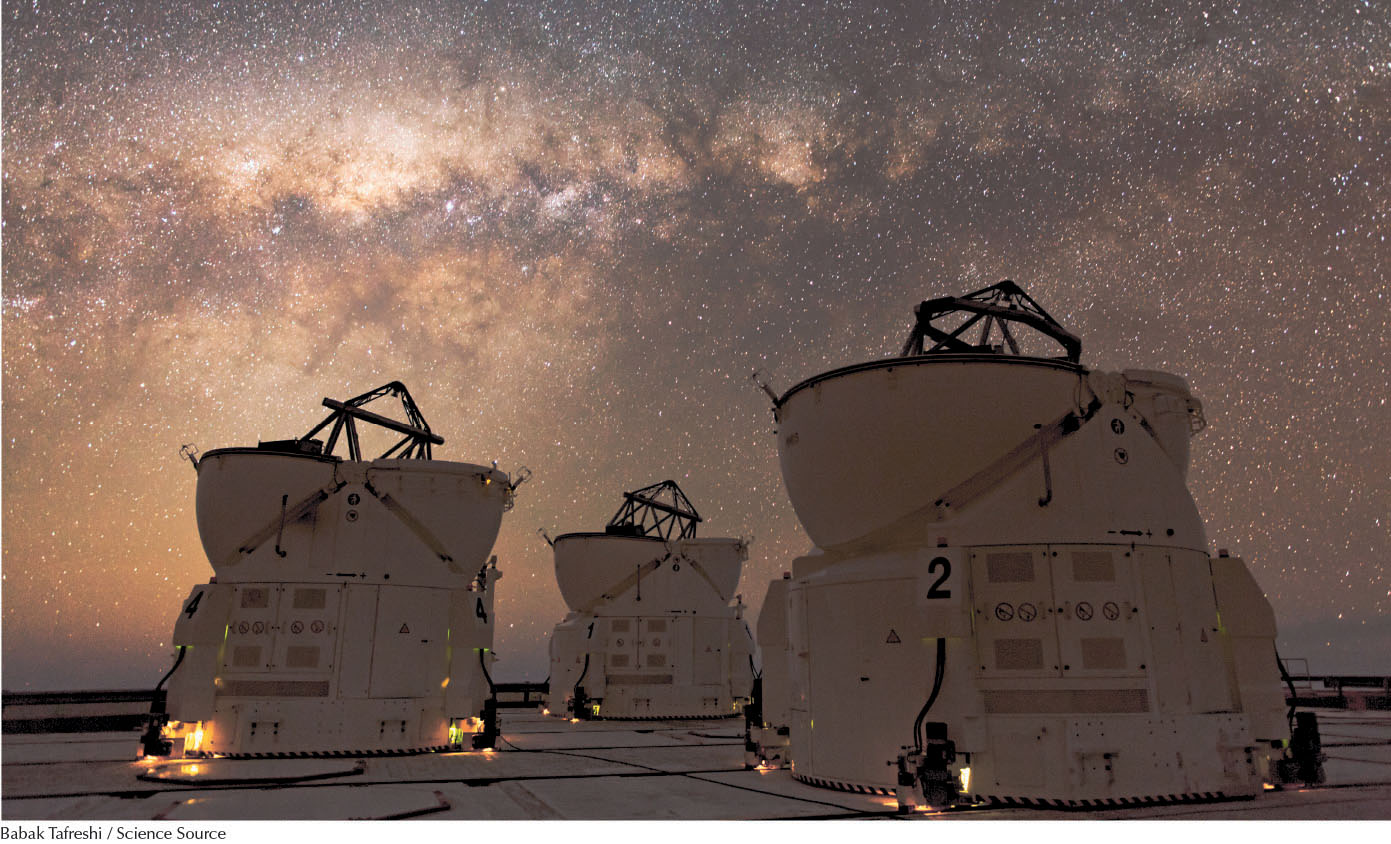69
CHAPTER [strong]3[/strong]

Light and Telescopes
WHAT DO YOU THINK?
 What is light?
What is light?
 Which type of electromagnetic radiation is most dangerous to life?
Which type of electromagnetic radiation is most dangerous to life?
 What is the main purpose of a telescope?
What is the main purpose of a telescope?
 Why do all research telescopes use mirrors, rather than lenses, to collect light?
Why do all research telescopes use mirrors, rather than lenses, to collect light?
 Why do stars twinkle?
Why do stars twinkle?
Answers to these questions appear in the text beside the corresponding numbers in the margins and at the end of the chapter.
70
With our eyes alone we can see visible light from several thousand stars. Until the seventeenth century, few people even dreamed that there were more of them. It was then that telescopes revolutionized human understanding of the universe, showing for the first time how little of the cosmos we normally see. The process of discovery continues, as telescopes reveal new things in space nearly every day. We can think of the radiation emitted by objects out there as the medium of natural cosmic communication, and telescopes as the means by which we gather and read those cosmic messages.
We have also discovered that visible light is only a tiny fraction of the energy emitted by objects in space. Indeed, such phenomena as interstellar clouds of gas and dust, the bodies lying behind these clouds, newly forming stars, intergalactic gas clouds, and a variety of exotic objects, such as black holes and neutron stars, are nearly invisible to even our best optical telescopes. However, many of these objects strongly emit a variety of nonvisible radiations (namely radio waves, microwaves, infrared and ultraviolet radiations, X-rays, and gamma rays) that we now have the technology to detect. Today, we use telescopes on the ground, floating high in the atmosphere, orbiting Earth, or traveling elsewhere in the solar system to see these myriad “stealth” objects in space.
In this chapter you will discover
 the connection between visible light, radio waves, X-rays, and other types of electromagnetic radiation
the connection between visible light, radio waves, X-rays, and other types of electromagnetic radiation
 the debate in past centuries over what light is and how Einstein resolved this question
the debate in past centuries over what light is and how Einstein resolved this question
 how telescopes collect and focus light
how telescopes collect and focus light
 the limitations of telescopes, especially those that use lenses to collect light
the limitations of telescopes, especially those that use lenses to collect light
 why different types of telescopes are used for different types of research
why different types of telescopes are used for different types of research
 how astronomers use the entire spectrum of electromagnetic radiation to observe the stars and other astronomical objects and events
how astronomers use the entire spectrum of electromagnetic radiation to observe the stars and other astronomical objects and events
 what the new generations of land-based and space-based high-technology telescopes being developed can do
what the new generations of land-based and space-based high-technology telescopes being developed can do